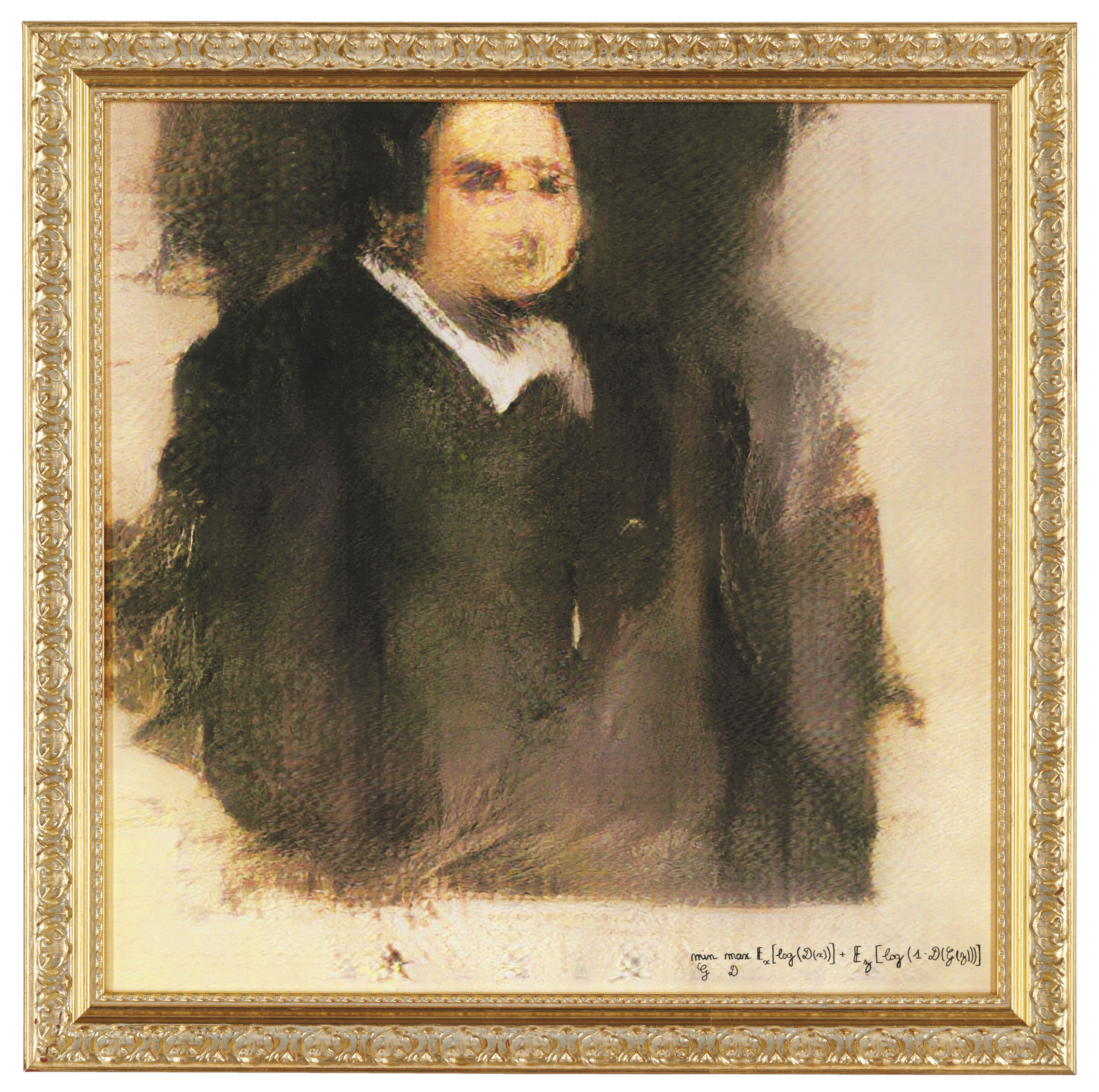The question of whether a machine can create art, or anything at all, is at the heart of many a philosophical debate and has been for decades. But whether it’s worth something on the market? That point has been settled definitively today as a portrait-like image issuing from an AI sold for nearly half a million dollars at auction.
“Edmond de Belamy,” whom you see above, such as he is, is one of several members of a fictitious family created by a “generative adversarial network,” in turn created by French AI engineers and artists Obvious.
GANs comprise two parts, for which terminology differs but Obvious calls the “generator” and the “discriminator.” Both visual recognition models are given a set of data to ingest, in this case 15,000 portraits from the last 600 years or so. Based on this data, the generator attempts to create new portraits, and the discriminator tries to identify those portraits as either authentic or artificial. The less sure the discriminator is that an image is artificial, the closer it tends to be to the authentic portraits.
The Belamy family is the result of this process playing out many times, producing the strange, distorted faces that have a dreamlike, and also nightmarish, quality to them.
They’re also unmistakably computer-generated. The patriarch and Count of the family, for instance, though the colors and gross figure are interesting and in broad strokes painterly, the pattern of stippling (or whatever you want to tall it) is a telltale mark of a computer attempting to create consistent texture. His wife, the Countess, has a psychedelic oil-slick quality to her hair and dress that’s quite unnatural, and what appears to be craquelure on closer inspection is revealed to be an intricate warping structure reminiscent of Photoshop effects.
“It is an attribute of the model that there is distortion,” explained Hugo Caselles-Dupré, from Obvious, to Christie’s. “The Discriminator is looking for the features of the image — a face, shoulders — and for now it is more easily fooled than a human eye.”
Obviously it doesn’t quite match the old masters. But as you can see from the variety evinced by the Belamy clan, the system has a remarkable range and one can intuitively grasp the type of painting this is — perhaps each even reminds you of a real one.
Certainly someone thought that Edmond at least was worth having; Obvious estimated that the painting (though surely a print) would fetch perhaps €10,000 on the block. Imagine the group’s surprise when the bidding escalated to $432,500 — obviously $500 too much for one of the bidders. The new owner remains anonymous, though we may learn more later. For all we know it is Obvious itself (unlikely) or some art holdings company speculating that this early AI piece may become an historic one.
As for the signature, a rather tongue-in-cheek solution was lit on by the team: At the bottom right of Edmond’s canvas is part of the algorithm that created him (though far from all the code required to do so).
The work page is a bit more specific: “generative Adversarial Network print, on canvas, 2018, signed with GAN model loss function in ink by the publisher, from a series of eleven unique images, published by Obvious Art, Paris, with original gilded wood frame.”
We’re no closer to getting at the heart of art, deciding whether these generated constructs count as art, and if so, by whom, but it’s interesting nevertheless. Even if these aren’t exactly the kind of thing you’d want to hang on your wall. That’s true of most art anyway.
from TechCrunch https://ift.tt/2PnPCDV




No comments:
Post a Comment